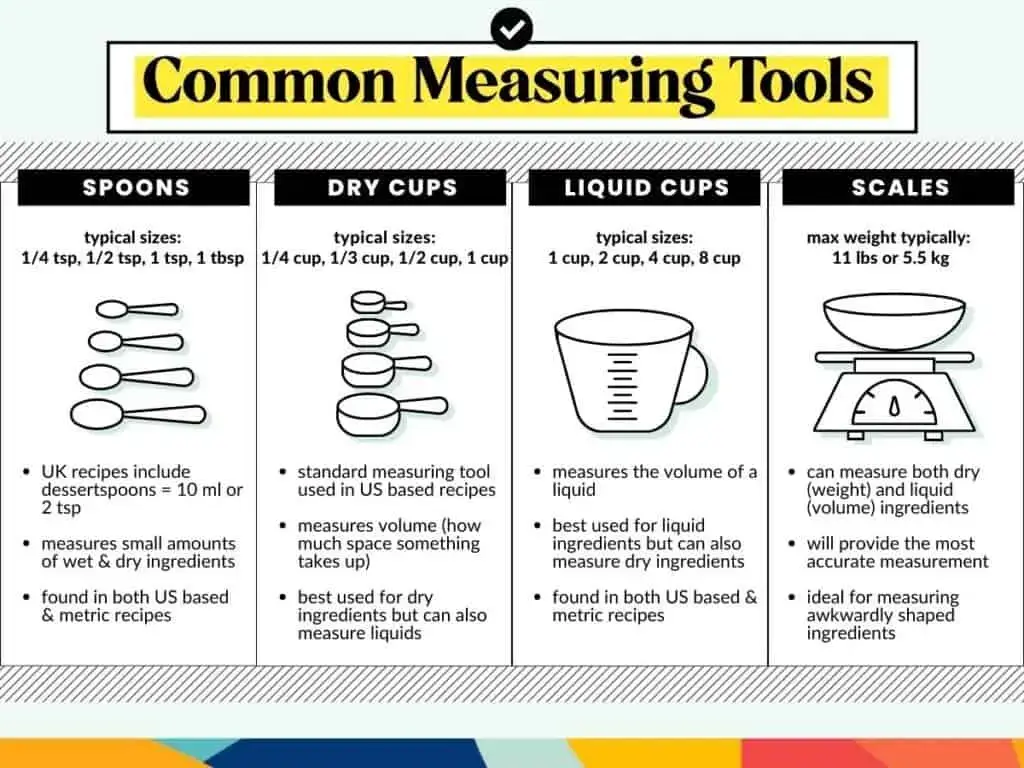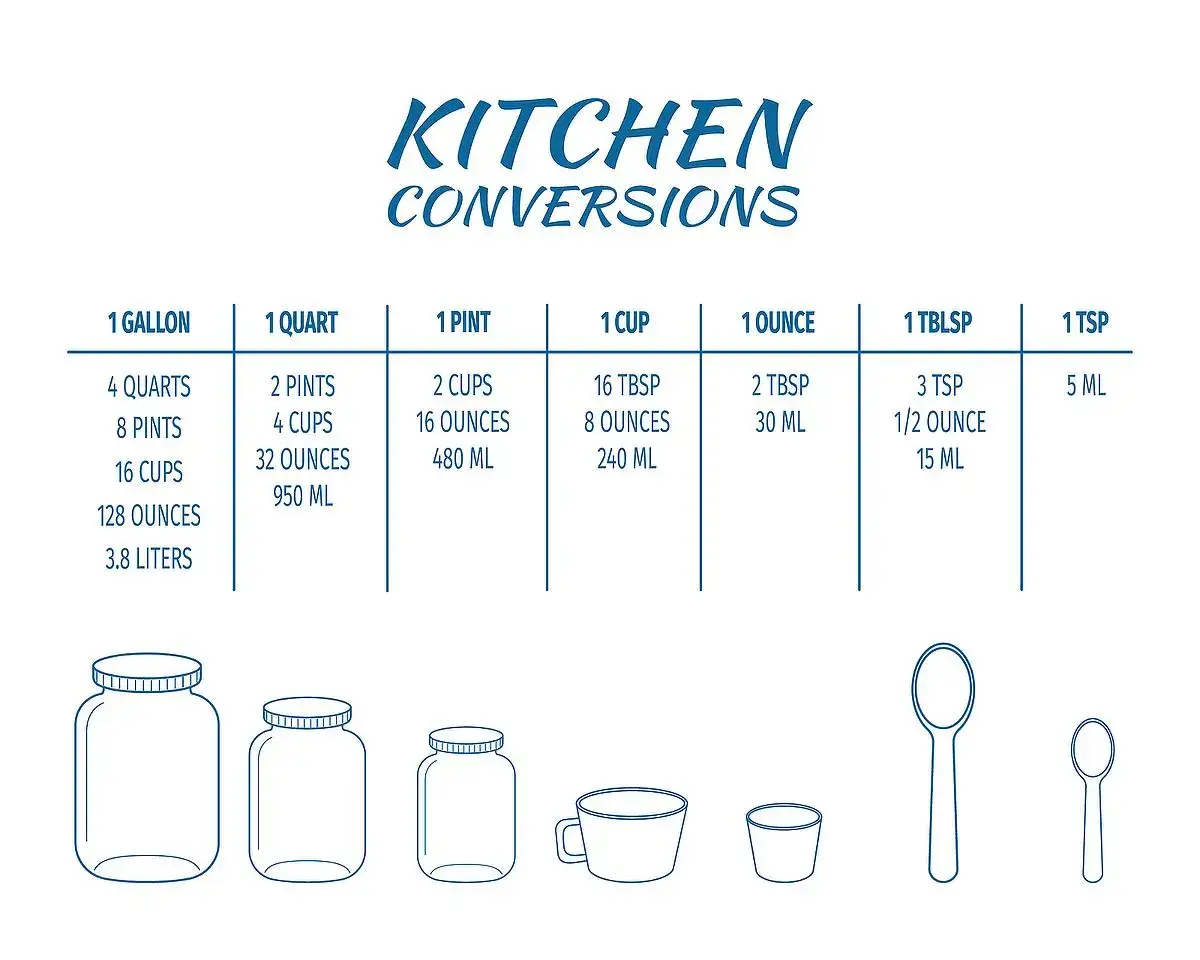Mastering Kitchen Measurements: How Many Ounces in a Cup?

Are you tired of guessing your way around kitchen measurements, especially when trying to figure out how many ounces are in a cup? Well, search no more. In this comprehensive guide, we aim to answer all your measurement-related questions, focusing on the burning issue of how many ounces make a cup.
Whether you’re an established chef or a kitchen rookie, understanding accurate measurements is a crucial part of cooking and baking. It’s all about precision, and knowing the right conversions can boost your kitchen confidence, enabling you to tackle any recipe with ease.
Join us on this culinary journey as we delve into the heart of kitchen measurements, shed light on the ounce-to-cup conversion, and provide you with the necessary know-how to excel in your culinary endeavors. It’s time to leave behind the confusion and the wasted time. Let’s explore the secrets to mastering kitchen measurements and elevate your dishes to new heights.
Importance of Accurate Kitchen Measurements
Accurate measurements in the kitchen are critical for consistency and producing the desired results. Whether you’re baking a cake or cooking a stew, getting your measurements right can make the difference between a culinary masterpiece and a kitchen disaster. Accuracy ensures consistency, and consistency guarantees delicious results every time.
The importance of accurate kitchen measurements goes beyond just getting the taste right. It’s also about safety, especially in baking, where certain ingredients can cause reactions if used excessively. For example, too much baking powder can make your baked goods rise too much and then collapse.
Using the correct measurements also helps you maintain a healthy diet. By accurately measuring your ingredients, you can keep track of your calorie intake, especially if you’re following a specific diet plan. So, the next time you find yourself asking why accurate kitchen measurements are important, remember that it’s not just about the taste, but also about safety and health.

Understanding the Basics of Kitchen Measurements
Before we delve into the nitty-gritty of kitchen measurements, it’s important to understand some basics. Measurements in the kitchen are typically done in two ways: by weight (ounces, pounds, grams, kilograms) and by volume (teaspoons, tablespoons, cups, pints, quarts, gallons, milliliters, liters). The type of measurement used depends on the ingredient and the recipe.
Volume measurements are commonly used in cooking, as they are easy and convenient for most ingredients. However, when it comes to baking, weight measurements are often more accurate. This is because ingredients like flour can settle, meaning a cup of flour can vary in weight.
It’s also essential to know the difference between fluid ounces and weight ounces. Fluid ounces measure volume, while weight ounces measure weight. This can be a bit confusing, but we’ll delve deeper into this later.
Converting Between Cups and Ounces
Now that we understand the basics, let’s focus on how to convert between cups and ounces. The conversion is pretty straightforward: one cup is equivalent to 8 fluid ounces. This conversion is based on the US customary system of measurements.
However, keep in mind that fluid ounces and weight ounces are not the same. A cup of flour will not weigh 8 ounces on a scale because flour is lighter than water. This is why it’s important to know whether the ounces in your recipe are fluid (volume) or weight.
Converting cups and ounces can be tricky, but with practice, it becomes second nature. Having a conversion chart handy can also help, especially when you’re just starting out.
How Many Ounces in a Cup
So, how many ounces are in a cup? As mentioned earlier, one cup is equivalent to 8 fluid ounces. But it’s important to remember that this is a volume measurement. If you’re measuring by weight, the number of ounces in a cup will depend on the density of the ingredient.
For example, a cup of water will weigh approximately 8.34 ounces, while a cup of flour will weigh around 4.25 ounces. This difference is due to the different densities of water and flour.
Knowing how many ounces are in a cup is essential for accurate cooking and baking. The hometogel login can help you easily scale recipes up or down, and it can ensure that you get the taste and consistency just right.
Common Kitchen Measurements and Their Equivalents
In addition to cups and ounces, there are several other common kitchen measurements that you should be familiar with. Here are a few and their equivalents:
- 1 tablespoon = 3 teaspoons
- 1 cup = 16 tablespoons
- 1 pint = 2 cups
- 1 quart = 2 pints
- 1 gallon = 4 quarts
It’s helpful to have these conversions on hand when you’re cooking or baking. They can make it easier to follow recipes, especially those that use different units of measurement.
Tips for Accurate Measuring in the Kitchen
Even with all the knowledge of conversions and measurements, it’s still possible to make mistakes when measuring ingredients. Here are a few tips to ensure that you’re measuring accurately:
- Always use the right tools for the job. Measuring cups are best for dry ingredients, while liquid measuring cups are best for liquids.
- Be precise. If a recipe calls for a level cup of flour, make sure to level it off. If it calls for a heaping cup, don’t level it off.
- Remember that weight and volume are not the same. A cup of flour will not weigh the same as a cup of sugar.
- Invest in a good set of measuring spoons and cups, and consider getting a kitchen scale for even more accuracy.
With these tips, you’re well on your way to becoming a master of kitchen measurements.

Kitchen Measurement Tools and Equipment
There are several tools and equipment that can help you measure accurately in the kitchen. Some of the most common include:
- Measuring cups and spoons: These are essential for measuring both dry and liquid ingredients. They usually come in sets with different sizes for different measurements.
- Kitchen scale: A kitchen scale is great for measuring ingredients by weight. It’s especially useful for baking, where accuracy is crucial.
- Liquid measuring cup: This is a cup specifically designed for measuring liquids. It has a spout for easy pouring and is usually marked with different units of measurement.
- Measuring jug: This is similar to a liquid measuring cup but is larger and has a handle. It’s great for measuring larger amounts of liquid.
It’s worth investing in good-quality measuring tools if you do a lot of cooking or baking. They can make your life much easier and can ensure that you get accurate measurements every time.
Recipes That Require Precise Measurements
Most recipes will benefit from accurate measurements, but there are some where it’s absolutely crucial. These include:
- Baking recipes: Baking is a science, and getting the measurements right can make the difference between a fluffy cake and a dense one.
- Sauces and dressings: The balance of flavors in sauces and dressings can be thrown off by inaccurate measurements.
- Recipes with expensive ingredients: If you’re using pricey ingredients like saffron or truffle oil, you don’t want to use too much or too little.
- Diet recipes: If you’re following a diet or counting calories, accurate measurements can help you stay on track.
By getting the measurements right in these recipes, you can ensure that you’re getting the best possible results.
Common Measurement Mistakes to Avoid
Even seasoned chefs can make measurement mistakes. Here are a few common ones to avoid:
- Using the wrong type of measuring cup: Remember, there are separate cups for dry and liquid ingredients.
- Not leveling off dry ingredients: If a recipe calls for a level cup of flour, make sure to level it off for an accurate measurement.
- Packing down ingredients: Unless the recipe specifically says to pack the ingredient (like brown sugar), you should lightly scoop it into the measuring cup.
- Measuring over the bowl: If you’re measuring dry ingredients over your mixing bowl and accidentally add too much, it can be difficult to remove the excess.
By avoiding these common mistakes, you can ensure that your measurements are accurate and your recipes turn out perfectly.
Becoming a Master of Kitchen Measurements
Becoming a master of kitchen measurements may seem like a daunting task, but with the right knowledge and tools, it’s entirely achievable. From understanding the basics to learning the conversions and using the right tools, mastering kitchen measurements is a journey of discovery.
Remember, practice makes perfect. The more you cook and bake, the more familiar you’ll become with measurements and conversions. So, don’t be afraid to get in the kitchen and start experimenting. Happy cooking!
Also read: DJT Stock: Understanding the Dynamics and Potential 2024




Leave a Comment